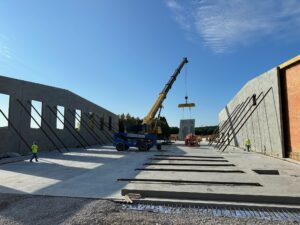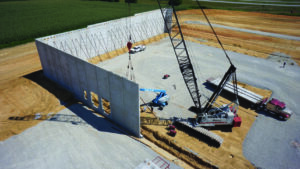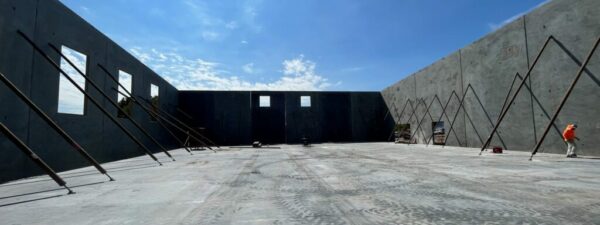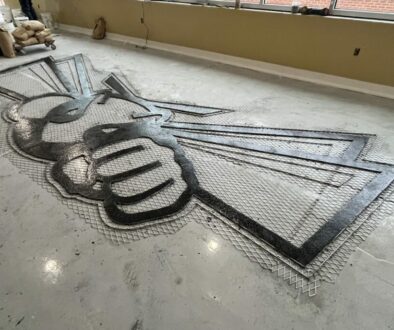Tilt-up VS Precast Construction
Both Tilt-up and Precast construction methods are good options due to the cost and time efficiencies they create. Concrete also has some natural insulation properties. However, the scope of the project may dictate one method over the other. Here are a few things we consider before choosing a method for a construction process.
What is a Tilt-up or Precast Wall?
Tilt-up panels are poured and cured on-site, typically right next to the building location. Once the panels have cured, they are “tilted” into place using cranes. Precast panels are manufactured in a controlled factory environment, cured, and then transported to the construction site.
Size Options
Because Tilt-up panels are created on-site, they can be taller and wider than precast panels. This potentially leads to fewer joints or seams in the building. With precast panels, the size and weight of the panels are limited by transportation logistics.
Curing Time & Speed
The curing environment for tilt-up has less control than in precast systems because of the outdoor environment. Precast panels cure in a controlled factory environment.
Because there’s no transportation time involved in panels being manufactured, Tilt-ups can speed up the construction process if the weather doesn’t interfere with the curing time. But speed can also work in favor of the Precast method if factory production of panels can occur concurrently with site preparations.
Flexibility
The Tilt-up offers flexibility since each panel can be cast to meet the specific needs and designs of a project. With precast, there is flexibility in design, but significant changes or unique designs may require new molds or adjustments to the production process.
Finish
 The finish of tilt-up walls can vary depending on the condition of the casting surface (typically the ground or temporary casting beds). However, different finishes and textures can still be achieved. Precast walls will have a more consistent finish and more intricate designs or embedded items can be achieved. This method is sometimes required for medical, pharmaceutical or other buildings that require smooth interior wall surfaces or other special requirements are necessary.
The finish of tilt-up walls can vary depending on the condition of the casting surface (typically the ground or temporary casting beds). However, different finishes and textures can still be achieved. Precast walls will have a more consistent finish and more intricate designs or embedded items can be achieved. This method is sometimes required for medical, pharmaceutical or other buildings that require smooth interior wall surfaces or other special requirements are necessary.
Cost
Tilt-up walls have a lower cost since there are no transportation costs like the precast walls. Transportation costs for Precast walls can be significant, especially for distant projects or if special transportation is required due to panel size and weight.
Connecting Panels
Connecting the panels also differs between the two methods. Tilt-Up connections are usually made on-site after the panels are tilted into place. Precast connections are often built into the panels during manufacturing, allowing for quick assembly on-site.
Conclusion
Both systems have merit but are best suited for different applications. The choice between tilt-up and precast often depends on project-specific requirements, including design, location, budget, and schedule considerations. It’s best to discuss options with your contractor.
If your business needs a new construction or addition, call Shireman Construction at 812-738-8291. We excel at listening and delivering.


